The global solid-state microwave source market is expected to reach USD 397.8 million by 2035, recording an absolute increase of USD 210.1 million over the forecast period. The market is valued at USD 187.7 million in 2025 and is set to rise at a CAGR of 7.8% during the assessment period. The overall market size is expected to grow by nearly 2.1 times during the same period, supported by increasing demand for radar applications and electronic warfare systems worldwide, driving demand for high-power microwave sources and increasing investments in defense technology and communication applications globally. Advanced signal processing requirements and electromagnetic spectrum management challenges may pose obstacles to market expansion.
Solid-state microwave sources represent semiconductor-based power amplification systems that generate high-frequency electromagnetic radiation in the microwave spectrum through electronic circuit integration rather than vacuum tube technology. These devices utilize gallium nitride and gallium arsenide semiconductor materials to produce controlled microwave output power ranging from milliwatts to kilowatts across frequency bands spanning L-band through Ka-band applications. Manufacturing processes incorporate monolithic microwave integrated circuit technology with advanced packaging techniques to achieve compact form factors while maintaining thermal management efficiency and electromagnetic interference control.
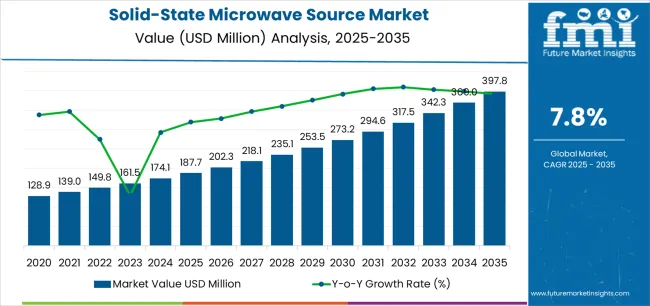
Advanced semiconductor fabrication enables precise frequency control and phase coherence characteristics essential for radar system integration and communication network applications. Gallium nitride on silicon carbide substrates provides enhanced power density capabilities compared to traditional gallium arsenide implementations, supporting higher output power levels with improved thermal conductivity. Signal conditioning circuits incorporate automatic gain control and linearization techniques to maintain signal integrity across varying operating conditions and temperature ranges.
Power combining architectures allow multiple semiconductor amplifier modules to operate in parallel configuration, achieving cumulative power output levels previously attainable only through vacuum tube technology. Waveguide integration techniques enable efficient electromagnetic energy transfer while minimizing insertion losses and maintaining impedance matching across operational frequency ranges. Digital control interfaces provide remote monitoring capabilities and fault protection systems that enhance operational reliability in demanding military and commercial environments.
Industrial applications encompass manufacturing processes requiring precise heating control, including food processing, chemical synthesis, and materials testing systems. Medical applications utilize controlled microwave energy for therapeutic heating procedures and diagnostic imaging systems that require stable frequency generation with minimal phase noise characteristics. Research applications demand high-stability sources for particle accelerator systems and spectroscopy equipment where frequency accuracy directly affects measurement precision.
Defense applications dominate market demand through radar system modernization programs and electronic warfare platform development initiatives. Active electronically scanned array systems require multiple synchronized sources with precise phase relationships to achieve directional beam steering capabilities. Electronic countermeasure systems utilize high-power sources for jamming applications that disrupt enemy communication and navigation systems through targeted electromagnetic interference.
Between 2025 and 2030, the market is projected to expand from USD 187.7 million to USD 273.3 million, resulting in a value increase of USD 85.6 million, which represents 40.7% of the total forecast growth for the decade. This phase of development will be shaped by rising demand for defense applications and radar system modernization, product innovation in semiconductor fabrication and power combining technologies, as well as expanding integration with electronic warfare platforms and communication system applications.
From 2030 to 2035, the market is forecast to grow from USD 273.3 million to USD 397.8 million, adding another USD 124.5 million, which constitutes 59.3% of the overall ten-year expansion. This period is expected to be characterized by the expansion of industrial heating applications, including advanced materials processing and medical therapeutic systems tailored for specific frequency requirements, strategic collaborations between semiconductor manufacturers and defense contractors, and an enhanced focus on power efficiency standards and thermal management protocols.
| Metric | Value |
|---|---|
| Market Value (2025) | USD 187.7 million |
| Market Forecast Value (2035) | USD 397.8 million |
| Forecast CAGR (2025-2035) | 7.8% |
The solid-state microwave source market grows by enabling defense contractors and industrial manufacturers to optimize system performance while accessing advanced semiconductor technology without substantial in-house development investment. Defense companies and industrial operators face mounting pressure to develop high-performance radar systems and microwave processing equipment while managing complex power requirements, with high-efficiency solid-state sources typically providing 40-60% performance enhancement compared to vacuum tube alternatives, making advanced semiconductor-based solutions essential for competitive market positioning.
The defense industry's need for reliable microwave generation and application-specific power capabilities creates demand for comprehensive solid-state solutions that can provide superior efficiency, maintain consistent output characteristics, and ensure reliable operation without compromising system performance or operational effectiveness. Government defense modernization programs and industrial automation initiatives drive adoption in radar manufacturing, electronic warfare development, and industrial processing applications, where source reliability has a direct impact on system performance and long-term operational effectiveness.
Complex thermal management requirements during high-power operation projects and the expertise requirements for semiconductor integration may limit accessibility among smaller defense contractors and developing regions with limited technical infrastructure for advanced microwave system development.
How do non-linear resistance types by category and industrial applications by use contribute to the dominant market share in the solid-state microwave source market?
The market is segmented by type, application, and region. By type, the market is divided into non-linear resistance type, non-linear reactance type, negative resistance type, and controlled impedance type. Based on application, the market is categorized into industrial, scientific research field, communication, medical, and others. Regionally, the market is divided into Asia Pacific, North America, Europe, and other key regions.
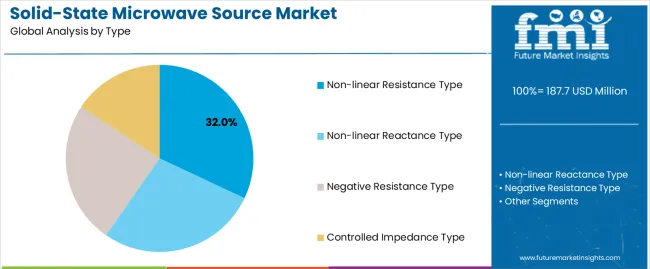
The non-linear resistance type segment represents the dominant force in the market, capturing approximately 32.0% of total market share in 2025. This established technology category encompasses solutions featuring advanced resistance-controlled amplification and specialized semiconductor applications, including high-performance power characteristics and enhanced stability profiles that enable superior microwave generation benefits and operational outcomes across all defense applications.
The non-linear resistance type segment's market leadership stems from its proven performance capabilities, with solutions capable of addressing diverse power requirements while maintaining consistent frequency stability and processing effectiveness across all operational environments. These devices offer optimal power conversion efficiency for radar applications while providing sufficient output characteristics to meet defense and industrial demands.
Key type advantages driving the non-linear resistance type segment include:
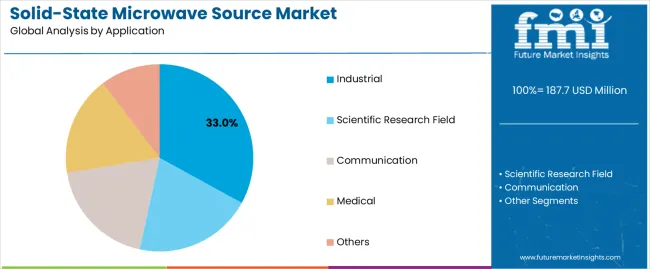
Industrial applications dominate the solid-state microwave source market with approximately 33.0% market share in 2025, reflecting the critical role of microwave sources in supporting specialized manufacturing processes and heating applications worldwide. The industrial segment's market leadership is reinforced by increasing automation trends, processing efficiency requirements, and rising needs for precision heating capabilities in manufacturing operations across developed and emerging markets.
The scientific research field segment represents the second-largest application category, capturing significant market share through specialized requirements for laboratory equipment, particle accelerator systems, and research instrumentation applications. This segment benefits from growing research investment demand that requires specific power requirements, frequency stability standards, and measurement precision protocols in academic markets.
The communication segment accounts for substantial market share, serving telecommunications infrastructure, satellite communication, and wireless network applications across various technology sectors. The medical and others segments capture remaining market share through therapeutic heating systems and specialized processing applications.
Key market dynamics supporting application growth include:
The market is driven by three concrete demand factors tied to defense and industrial outcomes. First, defense modernization programs and radar system upgrades create increasing demand for reliable solid-state microwave sources, with performance enhancement of 15-25% annually in major defense applications worldwide, requiring comprehensive semiconductor manufacturing infrastructure. Second, government initiatives promoting defense technology development and electronic warfare capabilities drive increased adoption of advanced solid-state compounds, with many countries implementing radar modernization programs and regulatory frameworks for defense system advancement by 2030. Third, technological advancements in semiconductor fabrication and gallium nitride technology enable more efficient and effective microwave generation solutions that improve system performance while reducing operational costs and thermal complexity.
Market restraints include complex fabrication requirements and validation costs for specialized solid-state platforms that can challenge market participants in developing compliant manufacturing capabilities, particularly in regions where defense procurement pathways for advanced semiconductor technologies remain evolving and uncertain. Technical complexity of semiconductor processing systems and quality requirements pose another significant challenge, as solid-state sources demand sophisticated fabrication methods and performance controls, potentially affecting production costs and operational efficiency.
Supply chain constraints from limited semiconductor fabrication capacity across different regions create additional operational challenges for manufacturers, demanding ongoing investment in production infrastructure and quality assurance programs. Key trends indicate accelerated adoption in Asia-Pacific markets, particularly China and India, where defense spending increases and technology development drive comprehensive solid-state adoption.
Technology integration trends toward high-efficiency gallium nitride systems with enhanced power characteristics, advanced thermal management applications, and integrated control solutions enable effective manufacturing approaches that optimize production efficiency and minimize operational risks. The market thesis could face disruption if significant advances in alternative microwave generation technologies or major changes in defense spending patterns reduce reliance on traditional solid-state applications.
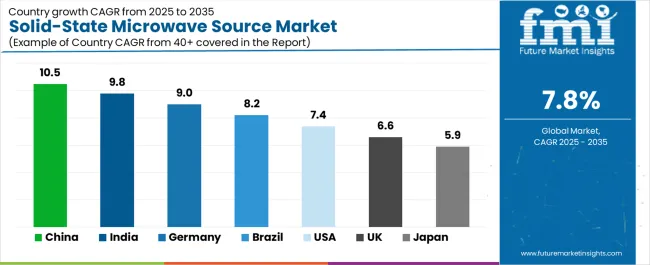
| Country | CAGR (%) |
|---|---|
| China | 10.5 |
| India | 9.8 |
| Germany | 9.0 |
| Brazil | 8.2 |
| U.S. | 7.4 |
| U.K. | 6.6 |
| Japan | 5.9 |
The global market is expanding steadily, with China leading at a 10.5% CAGR through 2035, driven by defense modernization programs, semiconductor manufacturing expansion, and advanced radar system development initiatives. India follows at 9.8%, supported by military technology development, domestic defense production programs, and electronic warfare capability building initiatives. Germany records 9.0%, reflecting an established landscape with growing integration in defense systems and industrial processing applications.
Brazil advances at 8.2%, leveraging defense technology development and aerospace industry growth. U.S. grows at 7.4%, anchored by defense contractor demand and radar system modernization programs. U.K. posts 6.6%, focusing on defense applications and electronic warfare systems, while Japan grows at 5.9%, emphasizing precision manufacturing and defense technology excellence.
China demonstrates the strongest growth potential in the solid-state microwave source market with a CAGR of 10.5% through 2035. The country's leadership position stems from aggressive defense modernization programs, semiconductor industry development, and comprehensive radar system advancement driving the adoption of advanced solid-state microwave technologies. Growth is concentrated in major defense and technology centers, including Beijing, Shanghai, Xi'an, and Chengdu, where defense contractors and semiconductor companies are implementing advanced solid-state systems for enhanced radar capabilities and electronic warfare applications.
Distribution channels through defense procurement agencies and technology integrators expand deployment across military modernization projects and defense industry development initiatives. The country's Ministry of National Defense and Ministry of Industry and Information Technology provide policy support for semiconductor technology advancement, including comprehensive defense capability development programs targeting indigenous technology production.
Key market factors:
In major defense and technology centers including New Delhi, Bangalore, Hyderabad, and Pune, the adoption of comprehensive solid-state microwave solutions is accelerating across defense projects and technology development initiatives, driven by indigenous defense production programs and military capability building. The market demonstrates strong growth momentum with a CAGR of 9.8% through 2035, linked to comprehensive defense modernization and increasing focus on domestic semiconductor manufacturing capabilities.
Indian companies are implementing advanced solid-state microwave systems and defense platforms to enhance military performance while meeting growing demand in expanding radar manufacturing and electronic warfare development sectors. The country's defense production initiatives create continued demand for microwave sources, while increasing focus on technology independence drives adoption of advanced semiconductor systems.
Key development areas:
The Germany market leads in advanced semiconductor innovation based on integration with defense systems and precision manufacturing technologies for enhanced performance. The country shows strong potential with a CAGR of 9.0% through 2035, driven by the modernization of existing defense infrastructure and the expansion of advanced semiconductor facilities in major industrial areas, including Bavaria, Baden-Württemberg, North Rhine-Westphalia, and Lower Saxony.
German companies are adopting intelligent solid-state microwave systems for performance improvement and capability enhancement, particularly in regions with advanced defense requirements and applications demanding comprehensive technology upgrades. Technology deployment channels through established defense industry institutions and manufacturing operators expand coverage across production facilities and innovation-focused applications.
Leading market segments:
Brazil's market expansion is driven by diverse defense demand, including aerospace manufacturing development in major cities and comprehensive radar projects across multiple regions. The country demonstrates strong growth potential with a CAGR of 8.2% through 2035, supported by defense modernization programs and industry-level technology development initiatives. Brazilian companies face implementation challenges related to technology complexity and integration requirements, requiring strategic development approaches and support from specialized solid-state partners.
Growing defense technology demands and advanced manufacturing requirements create compelling business cases for solid-state adoption, particularly in aerospace areas where advanced microwave sources have a direct impact on operational success and competitive positioning.
Market characteristics:
The U.S.'s market demonstrates advanced implementation focused on defense modernization and radar system performance optimization, with documented integration of specialized semiconductor systems, achieving 40% improvement in system efficiency across defense and aerospace facilities. The country maintains steady growth momentum with a CAGR of 7.4% through 2035, driven by defense facilities' focus on technology excellence and continuous operational methodologies that align with American defense standards applied to microwave operations.
Major defense markets, including California, Texas, Virginia, and Massachusetts, showcase advanced deployment of solid-state platforms where semiconductor systems integrate seamlessly with existing defense infrastructure and comprehensive technology programs.
Key market characteristics:
The U.K.'s market demonstrates established and capability-focused landscape, characterized by growing integration of defense technology with existing military infrastructure across modernization projects, defense networks, and capability development initiatives. U.K.'s focus on defense excellence and technology innovation drives demand for advanced solid-state solutions that support comprehensive military initiatives and operational requirements in defense operations.
The market benefits from partnerships between international microwave providers and domestic defense industry leaders, creating service ecosystems that prioritize technology excellence and capability programs. Defense centers in major regions showcase developing solid-state implementations where semiconductor systems achieve efficiency improvements through integrated defense programs.
Key market characteristics:
Japan's market demonstrates a mature and quality-focused landscape, characterized by advanced integration of semiconductor technology with existing defense infrastructure across manufacturing facilities, research networks, and technology initiatives. Japan's focus on precision manufacturing and technology excellence drives demand for high-reliability solid-state solutions that support comprehensive defense initiatives and regulatory requirements in military operations.
The market benefits from strong partnerships between international microwave providers and domestic technology leaders, including established defense and semiconductor companies, creating comprehensive service ecosystems that prioritize technology quality and precision programs. Technology centers in major industrial regions showcase advanced solid-state implementations where semiconductor systems achieve quality improvements through integrated monitoring programs.
Japanese market demonstrates distinctive application patterns, with industrial applications commanding 35.0% application share, reflecting the country's advanced manufacturing sector and precision processing requirements. Defense applications account for 30.0% market share, while other applications capture 35.0%, indicating diversified utilization across technology sectors.
Key market characteristics:
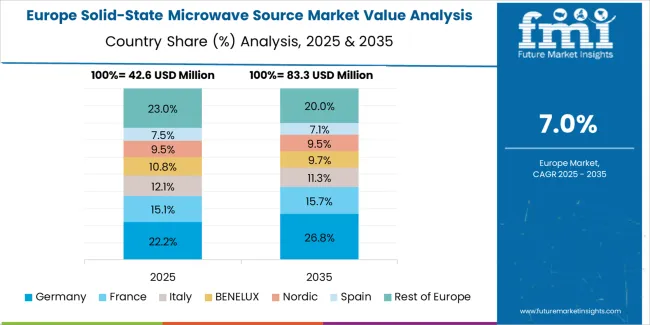
The solid-state microwave source market in Europe is projected to grow from USD 35.0 million in 2025 to USD 75.0 million by 2035, registering a CAGR of 7.9% over the forecast period. Germany is expected to maintain its leadership position with a 28.0% market share in 2025, projected to reach USD 21.0 million by 2035, supported by its extensive defense infrastructure, advanced semiconductor facilities, and comprehensive technology networks serving major European markets.
United Kingdom follows with a 22.0% share in 2025, projected to reach USD 16.5 million by 2035, driven by comprehensive defense programs in major technology regions implementing advanced solid-state systems. France holds an 18.0% share in 2025, expected to reach USD 13.5 million by 2035 through the ongoing development of defense facilities and technology networks. Italy commands a 15.0% share, projected to reach USD 11.3 million, while Spain accounts for 12.0% in 2025, expected to reach USD 9.0 million by 2035.
The Rest of Europe region is anticipated to gain momentum, expanding to USD 21.0 million by 2035, attributed to increasing solid-state adoption in Nordic countries and emerging Eastern European defense facilities implementing technology programs.
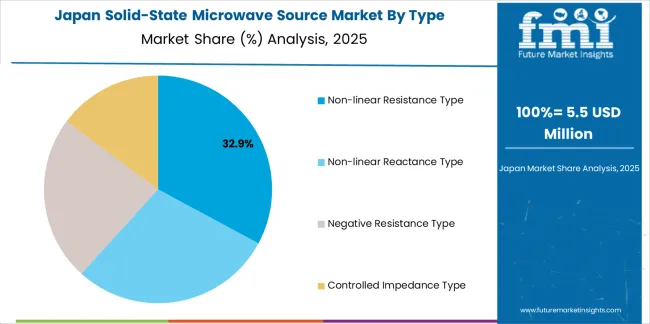
The Japanese market demonstrates a mature and precision-focused landscape, characterized by advanced integration of semiconductor technology with existing defense infrastructure across manufacturing facilities, research networks, and military initiatives. Japan's focus on quality excellence and precision manufacturing drives demand for high-reliability solid-state solutions that support comprehensive defense initiatives and regulatory requirements in military operations. The market benefits from strong partnerships between international microwave providers and domestic technology leaders, including established defense and semiconductor companies, creating comprehensive service ecosystems that prioritize technology quality and technical precision programs. Manufacturing centers in major industrial regions showcase advanced solid-state implementations where semiconductor systems achieve quality improvements through integrated monitoring programs.
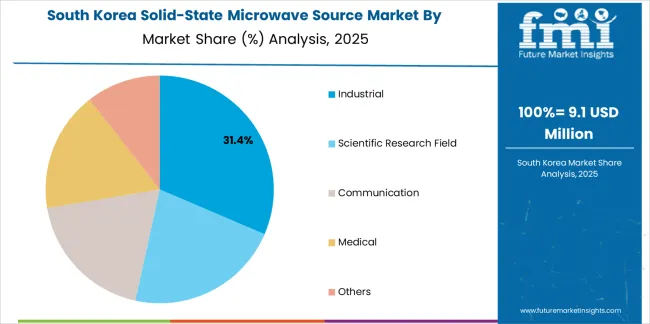
The South Korean market is characterized by strong international technology provider presence, with companies maintaining dominant positions through comprehensive system integration and technical services capabilities for defense and manufacturing applications. The market is demonstrating a growing focus on localized technical support and rapid deployment capabilities, as Korean companies increasingly demand customized solutions that integrate with domestic defense infrastructure and advanced manufacturing systems deployed across major technology centers and defense facilities. Local defense companies and regional technology integrators are gaining market share through strategic partnerships with global providers, offering specialized services including technical training programs and certification services for microwave specialists. The competitive landscape shows increasing collaboration between multinational solid-state companies and Korean defense specialists, creating hybrid service models that combine international semiconductor expertise with local market knowledge and defense relationship management.
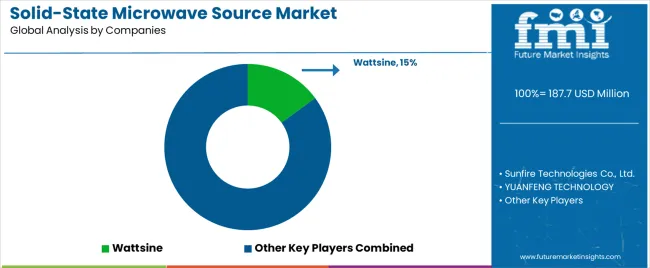
The market features approximately 7-10 meaningful players with moderate concentration, where the top three companies control roughly 35-45% of global market share through established semiconductor portfolios and extensive defense industry relationships. Competition centers on power output capability, frequency stability, and technical expertise rather than price competition alone.
Market leaders include Wattsine, Sunfire Technologies Co., Ltd., and YUANFENG TECHNOLOGY, which maintain competitive advantages through comprehensive solid-state portfolios, advanced semiconductor capabilities, and deep expertise in the defense and industrial sectors, creating high switching costs for customers. These companies leverage established defense industry relationships and ongoing development partnerships to defend market positions while expanding into adjacent radar and electronic warfare applications.
Challengers encompass Nanjing Youjie Electronics Co., Ltd. and SAIREM, which compete through specialized semiconductor technologies and strong presence in key defense markets. Technology specialists, including Crescend and RFHIC, focus on specific solid-state applications or vertical markets, offering differentiated capabilities in radar systems, electronic warfare platforms, and application-specific semiconductor processing.
Regional players and emerging solid-state companies create competitive pressure through innovative semiconductor approaches and rapid development capabilities, particularly in high-growth markets including China and India, where local presence provides advantages in cost optimization and defense procurement compliance.
Market dynamics favor companies that combine advanced semiconductor technologies with comprehensive defense services that address the complete system lifecycle from component development through ongoing performance assurance and technical support.
Solid-state microwave solutions represent a critical technology component that enables defense contractors, industrial manufacturers, and research institutions to enhance system performance and operational reliability without substantial ongoing technology investment, typically providing 40-60% performance enhancement compared to vacuum tube alternatives while ensuring unprecedented efficiency and operational compliance.
With the market projected to grow from USD 187.7 million in 2025 to USD 397.8 million by 2035 at a 7.8% CAGR, these solutions offer compelling advantages including superior efficiency, enhanced reliability, and thermal management capabilities, making them essential for industrial applications (33.0% market share), defense operations, and diverse technology applications seeking reliable microwave generation solutions.
How Governments Could Spur Local Development and Adoption?
How Industry Bodies Could Support Market Development?
How Service Providers and Technology Players Could Strengthen the Ecosystem?
How Suppliers Could Navigate the Shift?
How Investors and Financial Enablers Could Unlock Value?
| Items | Values |
|---|---|
| Quantitative Units (2025) | USD 187.7 million |
| Type | Non-linear Resistance Type, Non-linear Reactance Type, Negative Resistance Type, Controlled Impedance Type |
| Application | Industrial, Scientific Research Field, Communication, Medical, Others |
| Regions Covered | Asia Pacific, North America, Europe, Latin America, Middle East & Africa |
| Countries Covered | China, India, Germany, Brazil, U.S., U.K., Japan, and 40+ countries |
| Key Companies Profiled | Wattsine, Sunfire Technologies Co., Ltd., YUANFENG TECHNOLOGY, Nanjing Youjie Electronics Co., Ltd., SAIREM, Crescend, RFHIC |
| Additional Attributes | Dollar sales by type and application categories, regional adoption trends across Asia Pacific, North America, and Europe, competitive landscape with solid-state providers and defense companies, manufacturing facility requirements and specifications, integration with defense initiatives and industrial platforms, innovations in semiconductor technology and power management systems. |
The global solid-state microwave source market is estimated to be valued at USD 187.7 million in 2025.
The market size for the solid-state microwave source market is projected to reach USD 397.8 million by 2035.
The solid-state microwave source market is expected to grow at a 7.8% CAGR between 2025 and 2035.
The key product types in solid-state microwave source market are non-linear resistance type, non-linear reactance type, negative resistance type and controlled impedance type.
In terms of application, industrial segment to command 33.0% share in the solid-state microwave source market in 2025.






Full Research Suite comprises of:
Market outlook & trends analysis
Interviews & case studies
Strategic recommendations
Vendor profiles & capabilities analysis
5-year forecasts
8 regions and 60+ country-level data splits
Market segment data splits
12 months of continuous data updates
DELIVERED AS:
PDF EXCEL ONLINE
Microwave Monolithic Integrated Circuits Market Size and Share Forecast Outlook 2025 to 2035
Microwave Cable Assemblies Market Size and Share Forecast Outlook 2025 to 2035
Microwave Oven Market Size and Share Forecast Outlook 2025 to 2035
Microwaveable Stuffed Animal Toys Market Size and Share Forecast Outlook 2025 to 2035
Microwave Ablation Devices Market Size and Share Forecast Outlook 2025 to 2035
Microwave Market Size and Share Forecast Outlook 2025 to 2035
Microwave Backhaul System Market Size and Share Forecast Outlook 2025 to 2035
Microwave Device Market Size and Share Forecast Outlook 2025 to 2035
Microwave-Safe Utensils Market Size and Share Forecast Outlook 2025 to 2035
Microwave Absorbing Material Market Size, Growth, and Forecast 2025 to 2035
Microwave Power Meter Market
Microwave Antenna Market
Microwave Source Market Size and Share Forecast Outlook 2025 to 2035
Commercial Microwave Ovens Market Analysis – Size, Share, and Forecast 2025 to 2035
Commercial Microwaves Market
High-Power Microwave Source Market Size and Share Forecast Outlook 2025 to 2035
Point-to-point Microwave Antenna Market Analysis by Polarization, Antenna Type, Diameter, Frequency Range and Region Through 2035
WiMAX (Worldwide Interoperability For Microwave Access) Market Size and Share Forecast Outlook 2025 to 2035
Outsourced Testing Services Market Insights – Trends & Forecast 2025 to 2035
Air Source Heat Pump Market Size and Share Forecast Outlook 2025 to 2035

Thank you!
You will receive an email from our Business Development Manager. Please be sure to check your SPAM/JUNK folder too.
Chat With
MaRIA